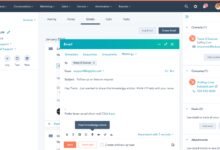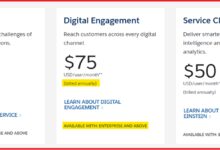CRM System Pricing: 7 Shocking Truths You Must Know
Navigating CRM system pricing can feel like decoding a secret language. With so many plans, tiers, and add-ons, it’s easy to get overwhelmed. But understanding the real costs is your first step toward a smarter investment.
[ez-toc]
Understanding CRM System Pricing: What You’re Really Paying For

Customer Relationship Management (CRM) systems are no longer luxury tools reserved for enterprise giants. Today, businesses of all sizes rely on CRM platforms to streamline sales, enhance customer service, and boost marketing efficiency. However, one of the biggest hurdles for companies—especially small and mid-sized ones—is understanding CRM system pricing. It’s not just about the monthly subscription fee; it’s about total cost of ownership, scalability, and long-term value.
The Core Components of CRM System Pricing
CRM system pricing is rarely a flat rate. Instead, it’s typically composed of several key elements that can dramatically affect your final bill. These include user licenses, feature tiers, data storage, integration capabilities, and support levels.
- User-based pricing: Most CRM platforms charge per user per month. The more team members you add, the higher the cost.
- Feature tiers: Basic, Professional, and Enterprise plans offer increasing functionality, with prices rising accordingly.
- Add-ons and modules: Advanced reporting, AI tools, or telephony integrations often come at extra cost.
For example, Salesforce offers multiple editions—Essentials, Professional, Enterprise, and Unlimited—each with escalating CRM system pricing based on capabilities and user limits. You can explore their full pricing structure here.
Hidden Costs in CRM System Pricing
Many businesses are surprised by unexpected expenses after implementation. These hidden costs include:
- Implementation fees: Some vendors charge for onboarding, data migration, and setup.
- Training costs: Internal or third-party training can add thousands to your budget.
- Customization charges: Tailoring workflows or dashboards may require developer time or paid consultants.
- Integration expenses: Connecting your CRM to existing tools like ERP or marketing automation platforms isn’t always seamless or free.
“The sticker price of a CRM is just the tip of the iceberg. The real cost lies in adoption, integration, and ongoing management.” — Gartner Research
Top CRM Platforms and Their Pricing Models
To make informed decisions, let’s examine how leading CRM platforms structure their CRM system pricing. Each has a unique approach, catering to different business needs and budgets.
Salesforce: The Enterprise Benchmark
Salesforce dominates the CRM market with a robust ecosystem and flexible pricing. However, its CRM system pricing can be complex and steep for smaller teams.
- Salesforce Essentials: $25/user/month – ideal for small businesses.
- Sales Cloud Professional: $75/user/month – includes lead scoring, forecasting, and workflow automation.
- Sales Cloud Enterprise: $150/user/month – advanced customization and API access.
- Unlimited Edition: $300/user/month – full feature set with 24/7 support.
Additional costs may include Pardot for marketing automation ($1,250/month) or Einstein AI features. Learn more at salesforce.com.
HubSpot CRM: Free to Start, Premium to Scale
HubSpot stands out with a genuinely free CRM tier, making it a favorite for startups and SMBs. But as you scale, CRM system pricing increases with added functionality.
- Free Plan: Unlimited contacts, deal tracking, email integration.
- Starter Plan: $45/month for basic sales and marketing tools.
- Professional Plans: $800/month (Sales Hub), $800/month (Marketing Hub) – includes automation, reporting, and analytics.
- Enterprise Plans: $3,200/month – advanced workflows, custom objects, and SLA support.
HubSpot’s modular approach means you pay only for what you use, but bundling can become expensive. Visit HubSpot’s pricing page for details.
Microsoft Dynamics 365: Integrated Power for Enterprises
Dynamics 365 offers deep integration with Microsoft 365, making it ideal for organizations already in the Microsoft ecosystem. Its CRM system pricing reflects enterprise-grade capabilities.
- Dynamics 365 Sales Professional: $65/user/month – core sales automation.
- Dynamics 365 Sales Enterprise: $95/user/month – includes AI insights, forecasting, and advanced analytics.
- Customer Service and Marketing Add-ons: Additional $50–$100/user/month.
Implementation often requires third-party partners, adding to the total cost. More info: dynamics.microsoft.com.
Factors That Influence CRM System Pricing
Several variables impact how much you’ll pay for a CRM. Understanding these can help you negotiate better deals and avoid overpaying.
Number of Users and Team Size
This is the most obvious factor. Most CRM vendors use a per-user pricing model. However, some offer volume discounts for larger teams. For example, Zoho CRM charges $14/user/month for up to 3 users, but only $12/user/month for 10+ users.
But beware: some platforms charge differently for different roles. Salesforce, for instance, allows limited access users at lower rates, but full sales reps require higher-tier licenses.
Data Storage and Usage Limits
CRM system pricing often includes data caps. Exceeding these can trigger overage fees or require upgrading to a higher plan.
- HubSpot limits free users to 1 million marketing contacts.
- Salesforce Enterprise offers 10GB of data per 1M users, but additional storage costs extra.
- Zoho CRM includes 5GB of storage in its Standard plan, scalable with add-ons.
High-volume businesses must carefully project data growth to avoid surprise costs.
Integration and API Access
The ability to connect your CRM with other tools (like email, calendars, ERP, or e-commerce platforms) is critical. But API access isn’t always included.
- Basic plans may limit API calls per day.
- Advanced integrations (e.g., with Shopify or SAP) may require middleware like Zapier or custom development.
- Some CRMs charge extra for API access—especially in lower tiers.
For example, Pipedrive’s Essential plan includes basic integrations, but Advanced and Professional plans unlock more API functionality.
Free vs. Paid CRM Systems: Is Free Really Better?
The allure of a free CRM is strong, especially for bootstrapped startups. But is it sustainable in the long run?
Pros and Cons of Free CRM Solutions
Free CRMs like HubSpot CRM, Zoho CRM Free, and Bitrix24 offer impressive functionality at $0. But they come with trade-offs.
- Pros: No upfront cost, easy to start, good for testing.
- Cons: Limited features, restricted automation, fewer integrations, branding in emails, and limited support.
For example, HubSpot’s free plan doesn’t include A/B testing or custom reporting—features you’ll need as you grow.
When to Upgrade from a Free CRM
It’s time to upgrade when you experience:
- Outgrowing contact limits.
- Needing advanced automation (e.g., lead scoring, workflows).
- Requiring custom reporting or dashboards.
- Scaling your sales or marketing team.
- Experiencing performance lags or sync issues.
Upgrading too late can hurt productivity; upgrading too early can waste money. The key is aligning CRM system pricing with business maturity.
Customization and Scalability: How They Affect CRM System Pricing
A CRM should grow with your business. But customization and scalability come at a cost—both financial and operational.
Custom Workflows and Automation
Basic CRMs offer simple automation (e.g., follow-up emails). But complex workflows—like multi-step approval processes or conditional logic—require advanced tools.
- HubSpot’s workflows are powerful but locked behind Professional and Enterprise tiers.
- Salesforce Flow allows deep customization but may require admin training or consultants.
- Zoho CRM’s Blueprint feature enables approval workflows but is only in higher plans.
The more complex your sales process, the more you’ll pay for automation.
Custom Objects and Fields
Standard CRMs track leads, contacts, accounts, and deals. But what if you need to track projects, subscriptions, or service tickets?
Custom objects allow you to extend your CRM beyond sales. However:
- They’re often restricted to higher-tier plans.
- They may require technical expertise to configure.
- They can impact performance and data management.
For example, Salesforce allows unlimited custom objects in Enterprise and Unlimited editions, but not in Professional.
Scalability and Future-Proofing
Choosing a CRM isn’t just about today’s needs—it’s about tomorrow’s growth. A platform that can’t scale will force you into a costly migration later.
- Can the CRM handle 10x more users?
- Does it support multi-currency and multi-language for global expansion?
- Is there a clear upgrade path from free to enterprise?
Platforms like Microsoft Dynamics and Salesforce are built for scalability, while niche CRMs may hit limits quickly.
Implementation and Onboarding: The Overlooked Cost in CRM System Pricing
Many companies focus only on subscription fees, forgetting that implementation can be the most expensive part of CRM system pricing.
Time and Labor Costs
Setting up a CRM requires:
- Data migration from spreadsheets or legacy systems.
- User training and change management.
- Process mapping and workflow design.
- Testing and go-live support.
Internal teams spend dozens of hours on this. At an average salary of $50/hour, even 40 hours of labor equals $2,000—before any software is paid.
Third-Party Consultants and Partners
Many businesses hire CRM consultants for a smooth rollout. Rates vary:
- Salesforce consultants: $150–$300/hour.
- HubSpot partners: $100–$200/hour.
- Microsoft Dynamics partners: $125–$250/hour.
A typical implementation can cost $10,000–$50,000, depending on complexity. Some vendors include limited onboarding, but premium support costs extra.
Training and Adoption Programs
A CRM is only as good as its adoption rate. Poor training leads to low usage, rendering the system useless.
- Vendor-provided training: Often included in Enterprise plans.
- Custom training materials: May require instructional designers.
- Ongoing coaching: Needed to reinforce usage.
Investing in adoption can boost ROI by 30–50%, according to Nucleus Research.
ROI of CRM: Is the Investment Worth It?
With CRM system pricing ranging from free to thousands per month, the big question is: does it pay off?
Measuring CRM ROI
Return on Investment (ROI) isn’t just about revenue—it’s about efficiency, retention, and growth. Key metrics include:
- Sales cycle length reduction.
- Increased win rates.
- Higher customer retention.
- Improved team productivity.
- Reduced administrative overhead.
A study by Nucleus Research found that CRM delivers an average $8.71 return for every $1 spent.
Case Study: How a Mid-Sized Company Saved $120K Annually
A B2B services firm with 50 employees switched from spreadsheets to a mid-tier CRM. Before:
- Sales reps spent 15 hours/week on manual data entry.
- Lead follow-up took 48+ hours on average.
- No visibility into pipeline health.
After CRM implementation:
- Sales cycle shortened by 30%.
- Lead response time dropped to under 5 minutes.
- Team productivity increased by 40%.
The CRM cost $50,000/year (software + implementation), but saved $120,000 in labor and increased revenue by $200,000. Net gain: $270,000.
Long-Term Value vs. Short-Term Savings
Choosing the cheapest CRM might save money today but cost more tomorrow. A platform that can’t scale forces migration, data loss, and retraining.
Instead, evaluate CRM system pricing in the context of 3–5 year growth. A slightly higher upfront cost can yield massive long-term savings and competitive advantage.
Tips for Negotiating CRM System Pricing
You don’t have to accept the listed price. Most vendors are open to negotiation, especially for annual commitments or large teams.
Ask for Annual Billing Discounts
Most CRM vendors offer 10–20% off for paying annually instead of monthly. For a $100/user/month plan with 20 users, that’s $4,800 saved per year.
Example: HubSpot offers up to 18% off for annual contracts. Always ask for the annual rate.
Leverage Competitor Quotes
Vendors hate losing deals. If you have a quote from Salesforce, use it to negotiate with HubSpot—or vice versa.
Many sales reps have discount authority up to 15–25%. Be polite but firm: “We’re considering X platform at Y price. Can you match or beat it?”
Request Free Add-Ons or Extended Trials
Instead of a price cut, ask for added value:
- Free training sessions.
- Extra user licenses.
- Extended 60-day trial.
- Complimentary onboarding.
These can save thousands without lowering the sticker price.
Consider Partner-Driven Deals
Many CRMs are sold through partners who may offer bundled services at a discount. For example, a Salesforce partner might include implementation, training, and support in a single package at a better rate than going direct.
What is the average cost of a CRM system?
The average cost of a CRM system ranges from $12 to $250 per user per month, depending on the platform and features. Entry-level systems like Zoho CRM start at $14/user/month, while enterprise solutions like Salesforce can exceed $300/user/month. Additional costs for implementation, training, and integrations can add thousands to the total.
Is there a truly free CRM with no hidden costs?
Yes, some CRMs like HubSpot CRM and Zoho CRM offer genuinely free plans with no time limits. However, they may include branding, limited features, or restrictions on automation and support. While there are no direct hidden fees, scalability limitations can create indirect costs as your business grows.
How do I choose the right CRM for my budget?
Start by defining your must-have features, team size, and growth plans. Compare 3–5 platforms based on total cost of ownership, not just monthly fees. Take advantage of free trials, calculate implementation costs, and project 3-year expenses. Prioritize scalability and user adoption to avoid costly migrations later.
Can I negotiate CRM pricing with vendors?
Yes, CRM pricing is often negotiable. Vendors may offer discounts for annual billing, multi-year contracts, or large user counts. You can also negotiate for free add-ons like training or extended trials. Using competitor quotes can strengthen your position during negotiations.
What are the most common hidden costs in CRM system pricing?
Common hidden costs include implementation fees, data migration, customizations, third-party integrations, API overages, user training, and ongoing support. Some vendors charge extra for advanced reporting, phone support, or multi-currency features. Always request a full cost breakdown before signing.
CRM system pricing is far more than a monthly subscription. It’s a strategic investment that impacts sales efficiency, customer satisfaction, and long-term growth. While entry-level options offer affordability, the true value lies in scalability, integration, and adoption. By understanding the full cost structure—from user licenses to hidden implementation fees—you can make a smarter, data-driven decision. Whether you choose a free tool or an enterprise suite, focus on total value, not just price. The right CRM doesn’t just pay for itself—it pays dividends.
CRM system pricing – CRM system pricing menjadi aspek penting yang dibahas di sini.
Further Reading:



